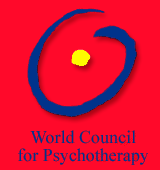Indignez-Vous! ‘Fukushima,’ New Media and Anti-Nuclear Activism in Japan
Nicola Liscutin
| Good-bye Gempatsu Demo. From: Sekai kara gempatsu nakusō konsāto burogu1 |
Indignez-vous! Get angry, resist and fight against the blatant social injustices in our world! Thus Stéphane Hessel, the 93-year old French former Resistance fighter, called on the youth in France, and everywhere else, in his inspirational pamphlet published in France in 2010. It has since been translated into dozens of languages, though not yet into Japanese.2 Indignation, for Hessel, provided the fundamental motivation for the Resistance movement in Nazi-occupied France, and he finds plenty of reasons for outrage today.
 |
Following Hessel’s cry for a non-violent, democratic uprising, young Spanish protestors named their movement ‘the Indignant.’ Although Hessel does not draw explicitly on his philosophy, it was Spinoza who highlighted in his Ethics and, especially, in his unfinished Political Treatise (both published posthumously in 1677) the motivational power of indignation incited by ‘some common injury’ that goads citizens to revolt against those in authority.3 ‘Human beings,’ in Spinoza’s influential formulation, ‘are led more by affect than reason’ – from which follows that ‘the multitude’ is led by ‘somecommon affect.’4 Spinoza wisely anticipated that ‘the power of the commonwealth, and its right, are diminished insofar as it offers causes for more human beings to conspire together.’5
Anti-nuclear activism in Japan has grown at astonishing speed in response to the Fukushima Daiichi nuclear crisis and its handling by the authorities. Over the past months, not a week has gone by without anti-nuclear protests taking place somewhere in Japan (see the nation-wide action calendar). In September, an intriguing array of new and established citizens’ movements had called for an ‘anti-nuclear action week’ that was packed with rallies, lectures, symposia, film screenings, exhibitions and various other events. On 9.11, protests were staged across Japan, with three demonstrations in Tokyo alone. The action week culminated in a c. 60,000 people rally in Meiji Park on September 19 (link) kicking off a movement to collect 10 million signatures for the Sayonara Gempatsupetition (link). Given that by the summer, forgetting seemed already to have begun, at least beyond Tōhoku,6 the nation-wide spread of these protests and their demographics are remarkable: from seasoned demonstrators to the many who confessed that this was their very first protest action; from families bringing their toddlers and children, to teenagers, students, freeters, the middle-aged, and pensioners. These demonstrations may still be small by comparison to the largest historical demonstrations, but as Karatani Kōjin emphasized in his speech at the Shinjuku rally, ‘by demonstrating we create a society that will protest.’7 He urged the Japanese to at last ‘own’ their fundamental democratic rights by exercising them. It now looks as if many Japanese have taken Karatani’s rallying cry to heart, for anti-nuclear events continue across the country and across the social spectrum.
Are we witnessing the formation of a ‘multitude’ in Japan rallying around the issue of nuclear energy and rising up against the ‘atomic village’ (gempatsu mura)8? This might be wishful thinking. Yet, the ‘ikari’ (anger) signs on the many flags of the large Fukushima contingent... full article from The Asia Pacific Journal: Japan Focus here....
The short term fear and short and long term anxiety and worry for the safety of their familys and children that has been caused as a result of the nuclear reactors meltdowns and realase of radiactive contamination at TEPCO's Fukushima number one power plant since 11/3/11 continue to harass and unsettle the hearts and minds of as yet uncounted millions of people here in Japan. Seeing the stress and uncertainty that has afflicted the hearts and minds of so many millions of good people from Fukushima Prefecture, the East Japan (Tohoku) Region as a whole, the Kanto Region and other parts of Japan as a whole, it is no longer only a question of whether or not the levels of radiation that have been realeased by this nuclear disaster into the atmosphere, water supply and food chains are bad enough to cause or increase the risk of developing cancer. The psychological impact that the stress of this constant uncertainty of the safety of the situation that people living in here does not justify living in the shadow that nuclear power plants cast now in the minds of the people of Japan, a country which experiences about 20% of the worlds total 5 magnitude earthquakes.













